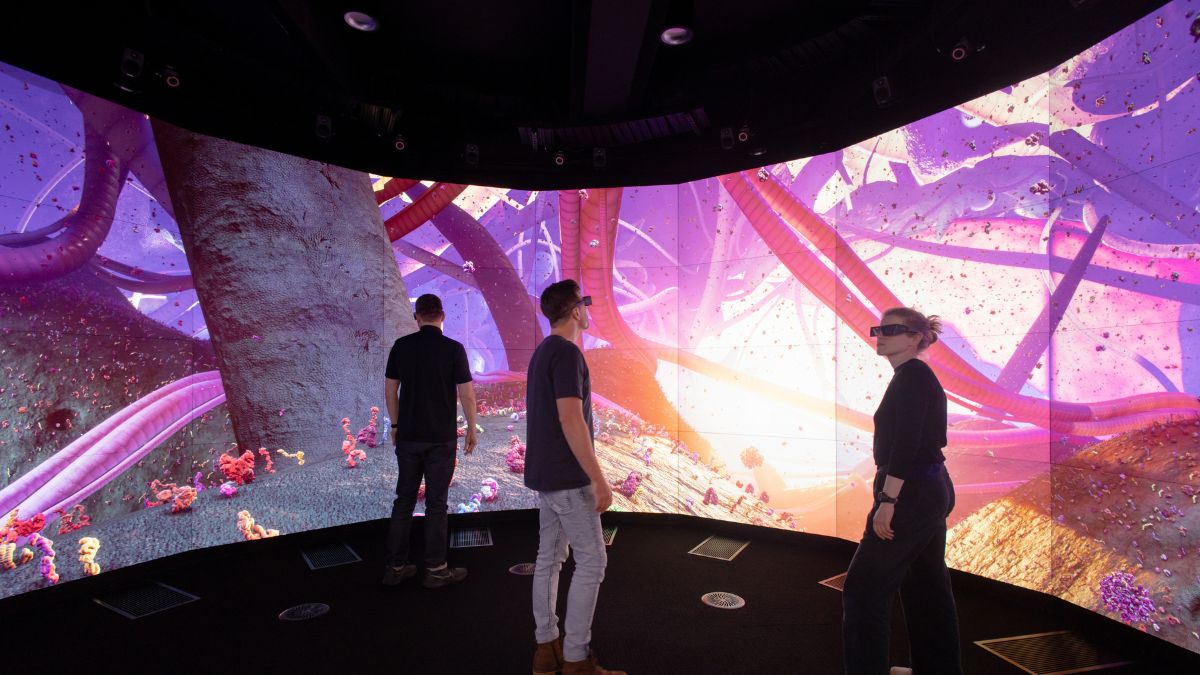
The 3DXLab produces design-centred visualisation research using immersive technologies.
The multidisciplinary lab brings together UNSW Sydney expertise in 3D visualisation (previously located in the 3D Visualisation Aesthetics Lab) and immersive display technologies (previously located in the Expanded Perception & Interaction Centre or EPICentre). It develops novel ways of visualising complex data to make it more accessible.
The lab, based at the School of Art & Design campus in Paddington, works across diverse fields, including art, design, science, medicine and engineering.
“3DXLab leverages cutting-edge technologies to create extraordinary digital experiences, using creative techniques from visual effects, animation and video games,” says Scientia Associate Professor John McGhee, Director of 3DXL. “You could argue that … [our] projects are really about building an immersive narrative of the world so people can move around in it and make better sense of it.”
While there’s an appetite for understanding scientific research that affects us, its complexity is often a barrier, he says. For example, cancer research can be quite abstract.
“[Immersive visualisations] allow scientists to simulate complex medical and health problems, providing researchers and the public with a powerful way of understanding the experience of others,” he says.
Collaboration is central to the lab’s ethos
“3DXLab brings researchers in storytelling, computer arts and 3D visualisation together with immersive designers and software engineers to harness digital’s potential to advance the physical world,” A/Prof. McGhee says.
The lab has research partnerships in medicine, agriculture, transport and aviation, working with UNSW Medicine & Health, UNSW Science, St Vincent’s Hospital Sydney, the Garvan Institute, Melbourne Science Gallery, the Australian Museum, Syngenta Australia, Toll Air Ambulance, Transport for NSW and others.
Its research has applications in education and training, simulation, biomedical communication, accessibility, and recording historical moments and people.
“As the metaverse grows and takes shape, virtual environments will become ubiquitous in our day-to-day lives,” A/Prof. McGhee says. The lab addresses the pressing need for creative and experimental research that examines how these spaces look, function and feel for users across diverse audiences.
“Designers and artists are critical in articulating research and deploying outcomes in a cultural environment, or an applied context in the world. The creative arts will be fundamental to solving the most pressing challenges society faces.”
- Log in to post comments
